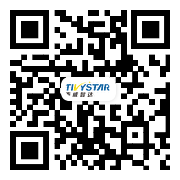Smart meters usually stack with the HART protocol, so how does the HART protocol achieve communication, diagnose equipment, measure and calculate numerical values?
We know that "HART" is the abbreviation for high-speed addressable remote sensors. The HART protocol utilizes the Bell 202 Frequency Shift Keying (FSK) standard to superimpose low-level digital communication signals on top of 4-20mA.
Frequency shift keying (FSK) technology enables bidirectional field communication and enables the transmission of more information than general process variables with intelligent field instruments. The HART protocol communicates at a rate of 1200bps without affecting 4-20mA signals and allows a host application (master device) to obtain two or more digital updates per second from intelligent field devices. Due to the continuous phase of the digital FSK signal, it will not interfere with the 4-20mA signal.
HART technology is a master/slave protocol, which means that intelligent field (slave) devices only send signals when the master device sends them. The HART protocol can be used in various modes, such as point-to-point or multi-point, to transmit information between intelligent field instruments and central control or monitoring systems.
HART communication occurs between two devices with HART functionality, typically between intelligent field devices and control or monitoring systems. Standard instrument grade cables are used for communication, and standard wiring and terminal handling methods are used.
The HART protocol provides two synchronous communication channels: 4-20mA analog signal and one digital signal. The 4-20mA signal utilizes a 4-20mA current loop - it is the fastest and most reliable industry standard for transmitting primary measurement values (in the case of on-site instruments). In addition, HART utilizes digital signals superimposed on analog signals to transmit other device information.
The digital signal contains information from the device, including device status, diagnosis, additional measurements or calculated values, etc. The combination of these two communication channels provides a low-cost, highly reliable, and complete on-site communication solution that is easy to use and configure.
What are the advantages of the HART protocol?
HART technology can help you improve operational capabilities by leveraging the capabilities of a complete set of intelligent device data. Provide early warning of potential changes in equipment, products, or processes. Shorten the troubleshooting time from discovery to resolution.
Continuously verify the integrity of loop and control/automation system strategies. Improve asset efficiency and system availability. Improve the availability of the factory by integrating equipment and systems to detect previously undetectable issues. Real time detection of device and/or process connectivity issues. Reduce the impact of deviations by obtaining new early warnings. Avoid high costs caused by unplanned downtime or process interruptions. Reduce maintenance costs, quickly determine and verify control loops and equipment configurations. Use remote diagnosis to reduce unnecessary on-site inspections. Capture performance trend data for predictive maintenance diagnosis. Reduce spare parts inventory and equipment management costs.

